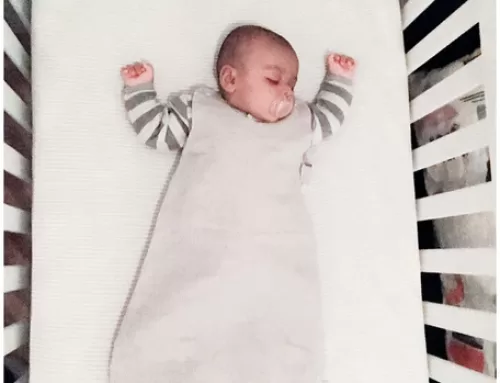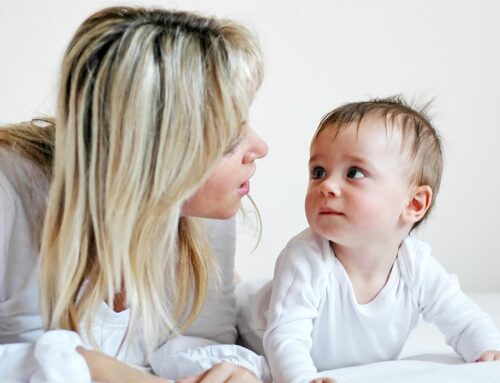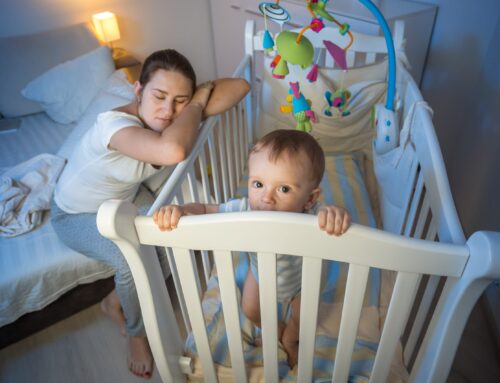Sleep Training: The Montessori Method
Okay, let’s talk about Montessori! It’s a method started by Dr. Maria Montessori who was a doctor, scientist, and teacher. The idea behind it is to let the baby lead the way and that learning starts from the moment they’re born. Babies depend on their parents, but they’re also pretty capable from day one. They grow fast, like going from making sounds to speaking, and crawling to walking all on their own. The thing is, sometimes parents have a tendency to over-help, but Dr. Montessori believed that this can actually hold the baby back. So, the best way is to only help when needed and let the baby figure things out for themselves.
So Dr. Montessori didn’t write much about sleep training specifically, but people have taken her principles and applied them to sleep training. There are a lot of books and websites out there with opinions on the Montessori approach to sleep, but they’re not based on what Dr. Montessori actually said. So, let’s talk about sleep training based on the real Montessori principles.
Following Dr. Montessori’s principle of going with the flow, our first tip is to pay attention to your baby. Babies usually have a routine of waking up, eating, playing, and then sleeping again. But every baby has their own sleep and wake patterns, which you can figure out by observing them. You’ll start to see when they’re most active, when they show signs of being tired, how long they sleep for, how they act when they wake up, etc. When you know your baby’s rhythm, it’s easier to understand what they need when they cry. For example, is it time for a nap or a feeding? Your baby will have unique signs that they’re tired, like rubbing their eyes or yawning, or making jerky movements. When you see these signs, you can follow a simple consistent sleep routine like this:
- Say something like, “Oh, you’re looking tired. Let’s get you to bed.”
- Wait for your baby to respond, maybe by lifting their head or looking at you.
- Pick them up gently, change their diaper if needed, and take them to their sleeping area.
- Do something calming, like singing or reading a book.
- Lay them down while they’re still awake, on their back.
- Reassure them that you’re there if they need you, and let them fall asleep on their own.
Getting your baby to sleep can be a stressful time for parents who feel like they have to put their baby to bed by a certain time. But it doesn’t have to be that way! Observing your baby and understanding their sleep patterns will make the whole process much more relaxing. You don’t always have to do everything for your baby – sometimes, just being there for them is enough. Just like when they first learn to walk, you provide a safe environment and step back to let them figure things out on their own. If your baby is fussy when it’s time for bed, it’s okay to sit next to them, rub their back, or sing to them until they fall asleep. If they don’t settle after 20 minutes, you can offer them some milk or water (depending on their age). And if they’re still struggling to sleep, it’s okay to take a break and go for a walk with them or hold them in a carrier.
So let’s simplify this for a beginner. The whole idea is to help your baby learn how to sleep on their own, which is actually a natural process that happens in stages. At first, your baby will be completely dependent on you to recognize when they’re tired and put them to sleep, but as they get older, they’ll start to take more control over their own sleep and become more independent.
Here’s how it breaks down:
- Dependence: When your baby is first born, they rely on you to help them fall asleep.
- Collaboration: As they get a little older, they’ll start to understand their sleep routine and maybe even walk or crawl to their bed when they’re tired, but they might still need some help from you.
- Increasing independence: By the end of the first year, your baby should be able to fall asleep and stay asleep on their own without any fuss.
Of course, everyone is different and you might need to adjust your sleep training methods as you go along. The important thing is to observe your baby, help them as little as possible, and let go when you feel ready. This way, your baby will be able to develop a healthy relationship with sleep and get all the rest they need.
The next tip is to have a set place where your baby sleeps. In the Montessori way, it’s recommended to use a cestina or moses basket (from birth till they’re too big for it) or a floor bed. You can place the cestina on top of the floor bed in the beginning so your baby gets used to it. This way, they can look around their room without anything blocking their view. Plus, it’s easier for you to be near your baby if they’re in a cestina or floor bed than if they’re in a crib. If the idea of a floor bed makes you uneasy, it’s okay. You can switch your baby to a toddler bed when they can crawl in and out of bed on their own, which is usually around 12 to 16 months. Don’t forget to follow the safe sleep guidelines from the American Academy of Pediatrics, which you can find here.
Next is allowing free movement to your child. Even when your baby is snoozing, they’re still moving around. You might’ve noticed that your baby moves their hands, arms, legs, and mouth. To make sure they’re comfortable, choose clothes that are soft and flexible, without too many labels or seams. Instead of a onesie, try socks if your baby’s chilly, so they can wiggle their toes. You can also wrap your baby up in a swaddle for comfort, but make sure it’s not too tight and their legs are free to move.
Finally, there’s the topponcino. It’s like a soft, cozy cushion that you can use when you’re holding your baby or when others are holding them. It helps calm the baby down and reduce stimulation, because it has a familiar temperature, smell, and feel. You can also use it during your baby’s sleep routine. Just place it in the cestina or on the floor bed, and when you’re putting your baby to sleep, shift them to it when they’re awake. This way, they won’t fuss or startle as much when they’re moving away from your arms.
Let’s talk about co-sleeping and the Montessori approach. People might think Montessori is against co-sleeping, but that’s not true! Actually, Montessori encourages parents and babies to bond as the baby falls asleep. The whole idea of Montessori is to help the baby become independent, but where the baby sleeps is totally up to you. If you want to co-sleep with your baby, go for it! Just make sure your baby falls asleep in their own bed first, and then you can move them to yours for feeding. Remember, it’s important to always keep an eye on your baby, no matter where they sleep.
Got more questions about sleep training? Check out this blog for more great resources.
Reference:
Davies, S., & Uzodike, J. (2021). The montessori baby. Workman Publishing.




